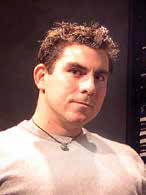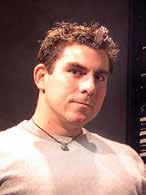
In the past 18 years and 550-plus projects, I’ve learned a lot as a consultant. I’ve been exposed to all sorts of different consulting styles and personalities. It’s hard to say who is doing it right, because we consultants work with so many different clients, and sometimes, no matter how hard you work, there is just nothing you can do. Based on my experience, though, there are a few things a good consultant should be really good at.
It is the role of a good consultant to keep abreast of the variety of options available for a multitude of systems types, whether it’s control, routing, switching, or audio. Keep in mind, though, that it is not enough to just understand how they work; a consultant should also know what the cost of each genre of product is.
Speaking of costs, a good consultant should have a tried-and-true system in place for estimating the costs of each system they design. There should be a well-maintained database of product costs by manufacturer and an accurate way of estimating installation labor. It should also continuously evolve with each new project, so it becomes more accurate as time goes by. All of this information should also be prepared and presented to clients in a simple-to-understand format, which should also continually evolve.
Drawings are another thing that consultants need to provide with a high level of quality. There are many schools of thought in this realm, but based on my experience, I have always been an advocate of providing the highest level of detail possible when developing architectural and infrastructure drawings. Dimension everything and delineate the scope for everything as often as possible. The answer to every possible question should already be in your drawings, which saves times and money.
With regard to system functional drawings, many consultants often develop one-line diagrams that are “conceptual” and “for bidding purposes only.” Based on my experience, this is a slick way of doing less work, which is fair game since we all must operate efficiently. But in the past few years, I have transitioned into developing functional diagrams that are as close to fully engineered as possible with a high level of graphics, such as front and back-panel images for each device block. This has helped my clients understand what they are looking at, and it has often made the integrator feel more confident in the system designs. It also eliminates any possible confusion.
Specifications or requests for proposals should also be prepared with a high degree of accuracy and conciseness. They should continually evolve with each project. If there is something that was left out and caused a problem on one project, then make sure it’s fixed for the next project. I’ve also felt that the closer you can get your specs to being fully boilerplate and name agnostic, the better off you are. The only thing that should change in a specification per project is the description of a project and the equipment list.
Speaking of equipment lists, I believe that the days of describing the specs of a device in a generic term and suggesting a project are outdated. If you are going to do functional diagrams with a high degree of accuracy, then you should simply make a full equipment list and include everything in the drawings, and everything you can think of as if you were building the system yourself. This will increase the accuracy of your cost estimation and will also help the contractor gain confidence in your design.
The bid process is a very important part of your job as a consultant. It should also refine itself continually, but it should be made as simple as possible, yet remain flexible so that you can easily adapt it to the needs of each client, or each client’s purchasing department. In the past few years, my bid process has evolved into producing good specs and drawings, and providing a standardized excel spreadsheet that integrators simply need to fill in the blank with. That makes leveling the bids and presenting the data to your clients very easy. It is perhaps a bit more difficult for integrators to do it this way since they all have standardized ways of producing proposals, but it must be done so that everyone has a fair chance, and the true winner is obvious.
As a consultant, if you strive to achieve greatness with regard to your knowledge base, cost estimation, drawing quality, spec writing abilities, and keep a firm grasp on the bid process, then you are certainly on your way to becoming a great consultant.
As for me, I am hanging up my consulting shoes and moving on to a new opportunity in the AV industry. While I’m thrilled for such a completely different challenge, I sure hope that over the past 18 years, I was at least thought of by some as a good consultant.
Joey D’Angelo (joseph.dangelo@cmsalter.com) is a vice president at Charles M. Salter Associates. He has worked at Salter for 18 years completed over 520 projects since his graduation from Cal Poly San Luis Obispo. He is always looking for professional challenges, can wire or fabricate anything, and plays many instruments.
Rent the Workspace
While 2008’s recession triggered the downsizing of many companies, it also paved the way for contract-based businesses that are dominating many industries today. For many, this project-by-project lifestyle wasn’t voluntary—layoffs and the lack of new jobs required professionals to get creative and start looking into offering their expertise for short-term needs. However, even as the U.S. continues to pull away from the effects of 2008, the idea of consultant-based or freelance work continues to grow, and with that atmosphere, these professionals find themselves traveling more and more to work on a project.
For many consultants and integrators in AV, traveling for a job isn’t a new concept, but with the independent business model becoming more common, many cities are adapting by creating workspaces for the professional on the go. Coffee shops still remain a popular location for quiet work sessions, but those locations can be crammed and distracting, and usually come with spotty Wi-Fi and minimal space for a computer. What professionals are finding is that the need for a space specifically designed for quiet work or to hold a meeting on the road is becoming more pertinent, and designers are responding.
Enter the rentable workspaces, where professionals can schedule blocks of time to use a space for a meeting, or the membership-based hubs for professionals to use as a home base when on the road. Instead of sharing a space with a variety of distractions, these private to semi-private locations offer a relaxing workspace with access to amenities you would expect in your home office.
In my home city of New York, I’m seeing more and more of these spaces opening up, and I regularly hear stories of locations in major cities across the U.S. and abroad. On my own time, I’ve conducted interviews with visiting reps, written about the pop-up art installations that occasionally occupy these spaces, and even booked my own private meeting room, and I find that having rentable workspaces offers me a chance to be productive wherever I may be traveling. It’s a concept that was made with the traveling, independent professional in mind.
—Kelleigh Welch
